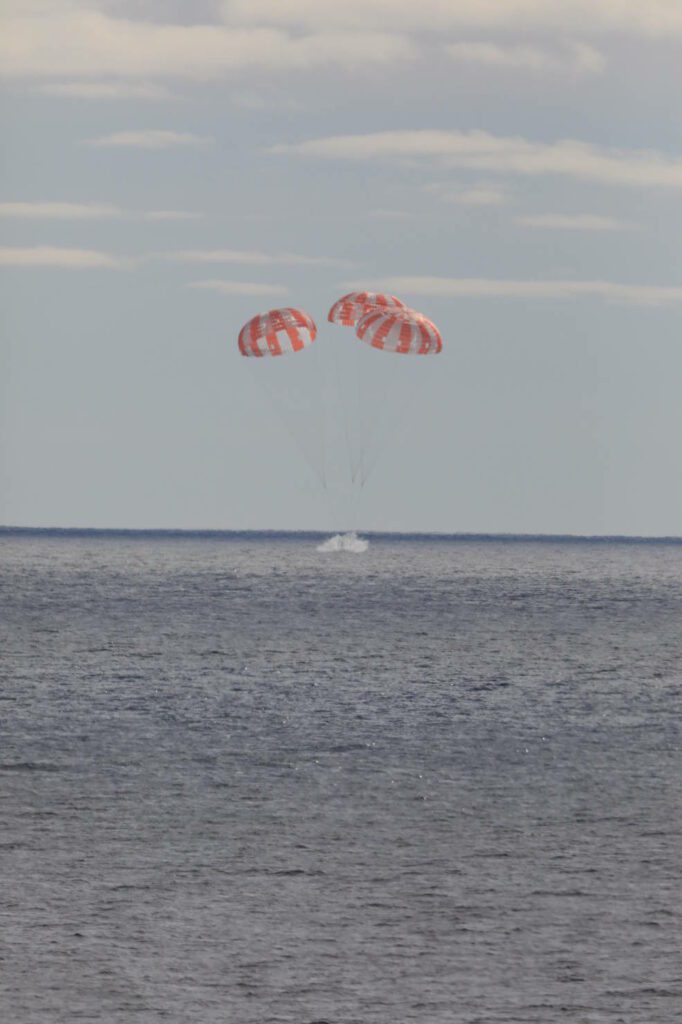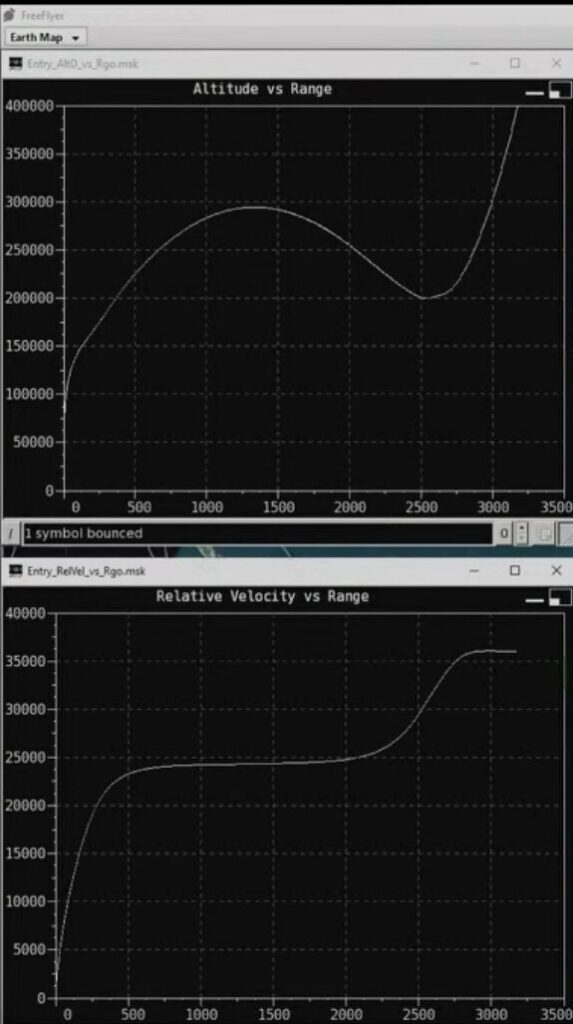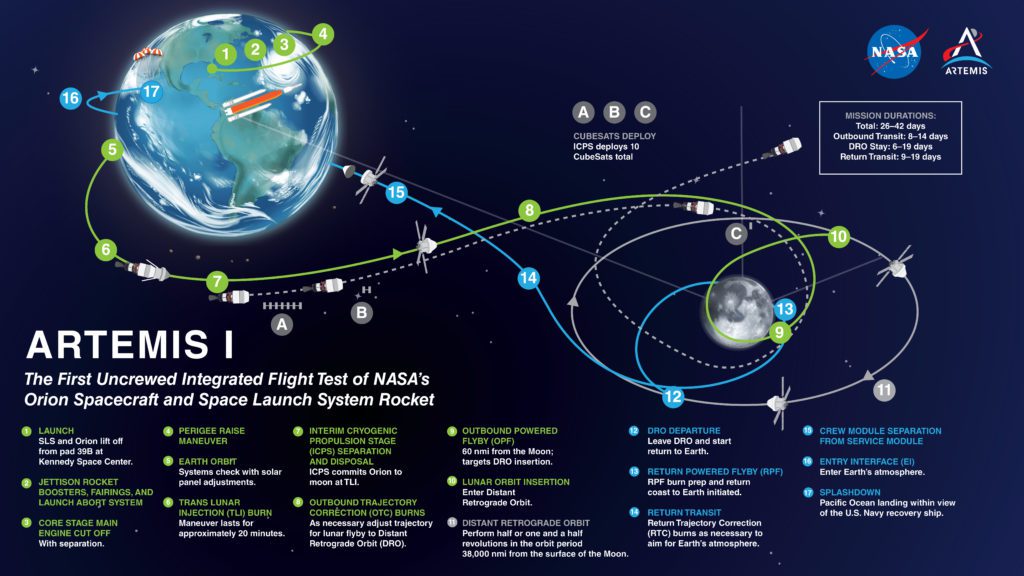After a 25½ day journey to the Moon and back, NASA’s Artemis I mission Orion spacecraft successfully splashed down in the Pacific Ocean, west of Baja California, at 1740 GMT on 11 December. In doing so, it tested out the guidance and thermal protection systems required for re-entry as well as the drogue and main parachute systems needed for a safe splashdown. By a quirk of fate, the splashdown came exactly 50 years after the final Apollo landing (Apollo 17) on the Moon.
Prior to entering the Earth’s atmosphere, the crew module separated from its ESA-provided service module. As the craft re-entered, the guidance system combined with the lift vector of the spacecraft (rotated to either up or down) to achieve a “skip re-entry” profile to carefully bleed off the speed from its super-orbital velocity to a suborbital condition. This creates the most benign environment for both the thermal protection system and g-force deceleration for the crew, while maintaining an accurate landing position.
The Apollo spacecraft used this technique in a lesser version to maintain flight in a safe re-entry corridor. This avoided coming in too fast with too much heating and g-load, or coming in too shallowly with the risk that the capsule would not slow down enough and slide off the atmosphere back into deep space. Orion’s more extreme skip entry technique has been used before by the Soviet Zond series of spacecraft, a precursor to USSR’s later cancelled human lunar landing attempts.
Despite the best thermal environment, Orion endured external temperatures of circa 2,700 degrees Celsius on re-entry. The drogue and main parachutes were then deployed to achieve splashdown. The craft was recovered by US Navy ships.
During the mission, Orion performed two lunar flybys, coming within 130 km of the lunar surface on its way to and from its Distant Retrograde Orbit parking position. After its second flyby, the Orion service module made a burn to send itself and the Orion Crew Capsule back to Earth.
With all of Orion’s systems fully tested out, and with the SLS rocket now proven, the next Artemis flight, Artemis II – a human-crewed mission around the Moon – will take place in 2024.
“Orion has returned from the Moon and is safely back on planet Earth,” said Mike Sarafin, Artemis I mission manager. “With splashdown we have successfully operated Orion in the deep space environment, where it exceeded our expectations, and demonstrated that Orion can withstand the extreme conditions of returning through Earth’s atmosphere from lunar velocities.”
Jim Free, NASA associate administrator for the Exploration Systems Development Mission Directorate, said: “With Orion safely returned to Earth we can begin to see our next mission on the horizon which will fly crew to the Moon for the first time as a part of the next era of exploration. This begins our path to a regular cadence of missions and a sustained human presence at the Moon for scientific discovery and to prepare for human missions to Mars.”
If the Artemis II Orion mission goes well, a full landing mission, Artemis III, using the HLS (Human Landing System) lunar lander being developed by SpaceX (assuming it is ready in time), will take place in 2025.










